Graphing falls into one of the five disciplines of math instruction–data analysis and probability. However, it is easy to question how one might go about teaching preschoolers concepts under that discipline. Luckily, I’ve made an easy-to-use printable graphing lesson plan for preschoolers that you can use with your preschoolers to teach the valuable skill of graphing.
Teaching graphing is easier than you might think. It is the natural next step after sorting and categorizing, something that preschoolers love to do anyway.
Graphing is simply a more linear way of organizing that information. I want to share with you a very easy way to get your preschooler starting in learning how to graph.
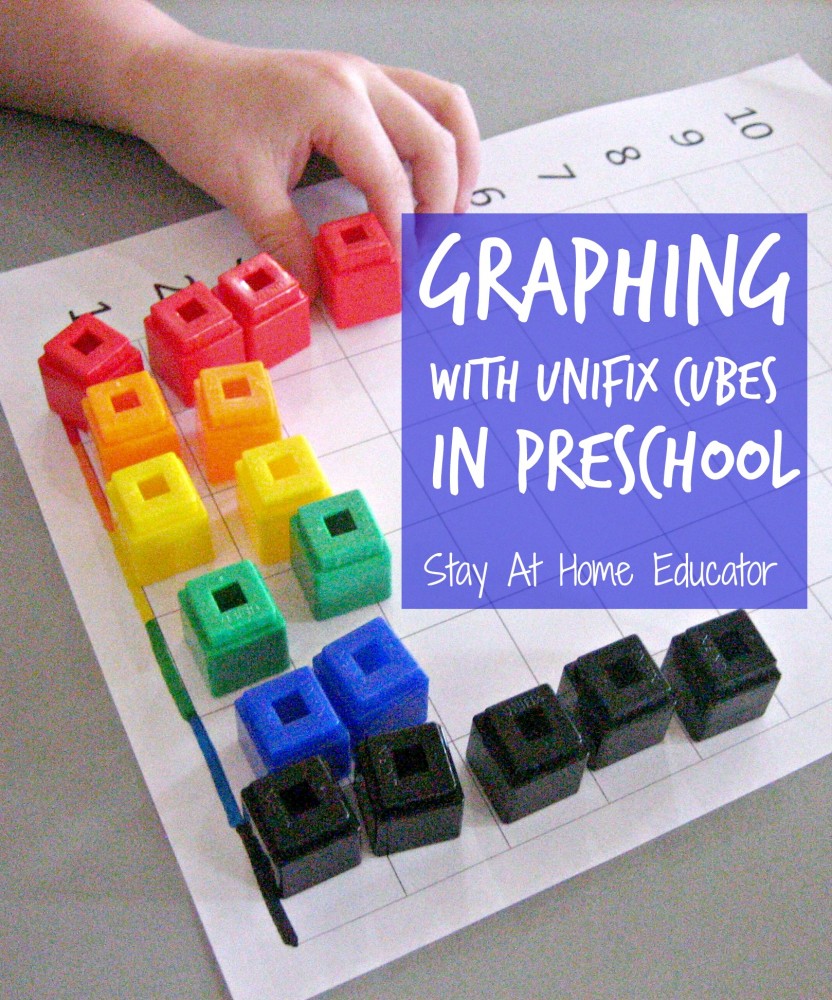
If this is your first time, please join me regularly via E-mail in the right sidebar, Facebook, Twitter @StayAtHomeEdu, and Pinterest. For your convince, I have included some of our favorite products related to counting and graphing. Any purchase of these products goes directly to maintaining this blog.
How to Use the Graphing Lesson Plan for Preschoolers

My students have lots of experience in sorting, especially by color, so I began this activity by modeling for my students and thinking aloud as I demonstrated.
I began by sorting a tower of twenty unifix cubes by color. (You can use any kind of colored counter). Once is was obvious as to what I was doing, the students naturally invited themselves to join in, telling me where to put each cube.
As this was happening, I explained that I was sorting by color.
What you need for the graphing lesson for preschoolers: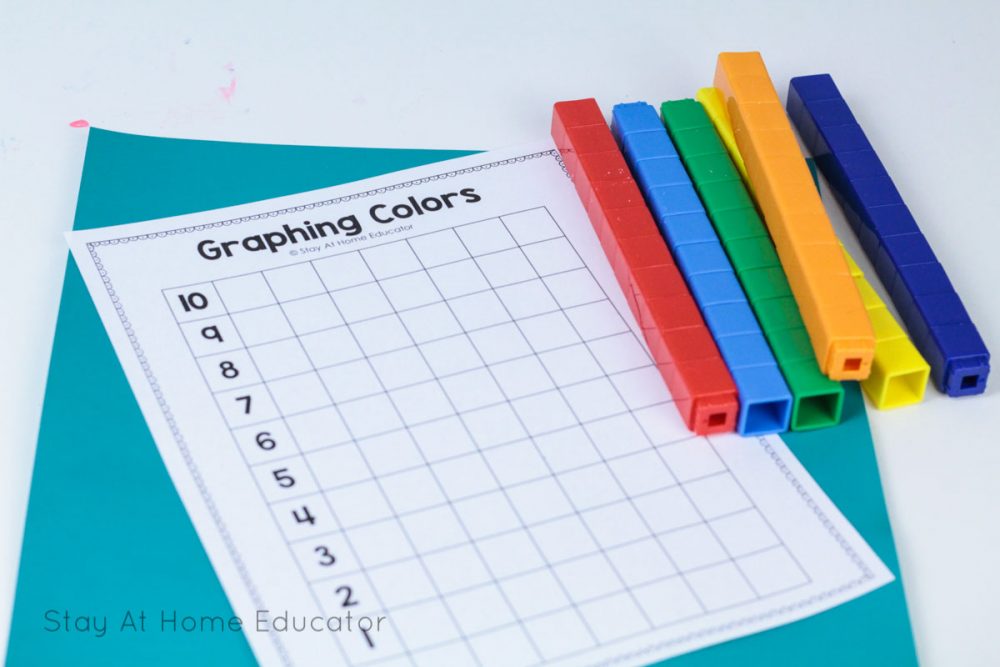
- Unifix cubes
- Markers
- Graphing printable
- Paper
- Glue
- Scissors
Graphing Lesson Plan for Preschoolers Printable
Thus, I introduced the graphing sheet. (Printable below). After explaining the components of a graph, I transferred the cubes onto the sheet, one by one, demonstrating exactly what I wanted the students to do on their own.
As this was happening, the students immediately noticed which colors had more or less or the same amount. Great mathematical discussions!
How to Use Your Graphing Lesson Plans in Class
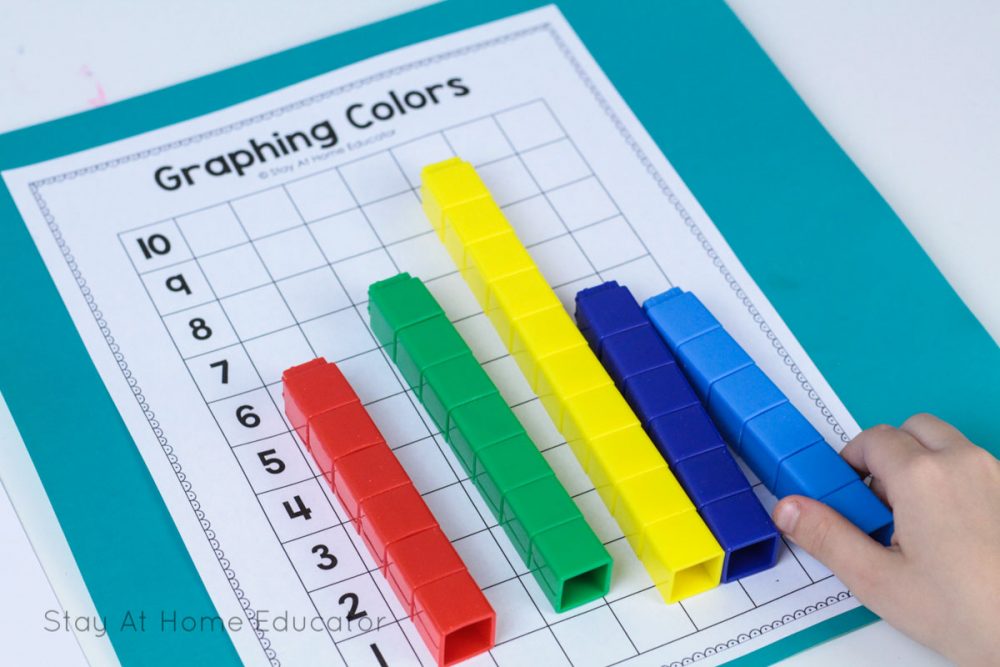
Once all the unifix cubes were sorted, I began counting how many of each color were in each group, but I kept losing my place and forgetting how many each group had. I shared with my students that there was a way we could organize all our cubes that would allow me to keep better track of each group.
My youngest students are three and this activity suited their abilities well. I love doing activities where students can manipulate materials. Here one student insisted on stacking each color together before pulling them apart again to graph them. This was OK. But, a problem with using mathematical manipulatives is that it makes it difficult to send work home to parents.
How can I demonstrate to the parents what their child is learning if they cannot be here to witness it?
Answer: pre-cut unifix sized squares out of construction paper and invite your students to glue a paper square down for each unifix cube on their graphing sheet. You can also have your students color in each corresponding square on the graph.
Above a student replaces each cube he removes with the same colored paper square, thus recording exactly what his graph looked like when it was all unifix cubes. This activity of recording by replacing took a bit of practice for some of my students, where I asked to check their work before they glued anything, but the math concepts abound.
Not to mention, again, that finishing the activity this way allowed me to show the parents of my students what I was teaching.
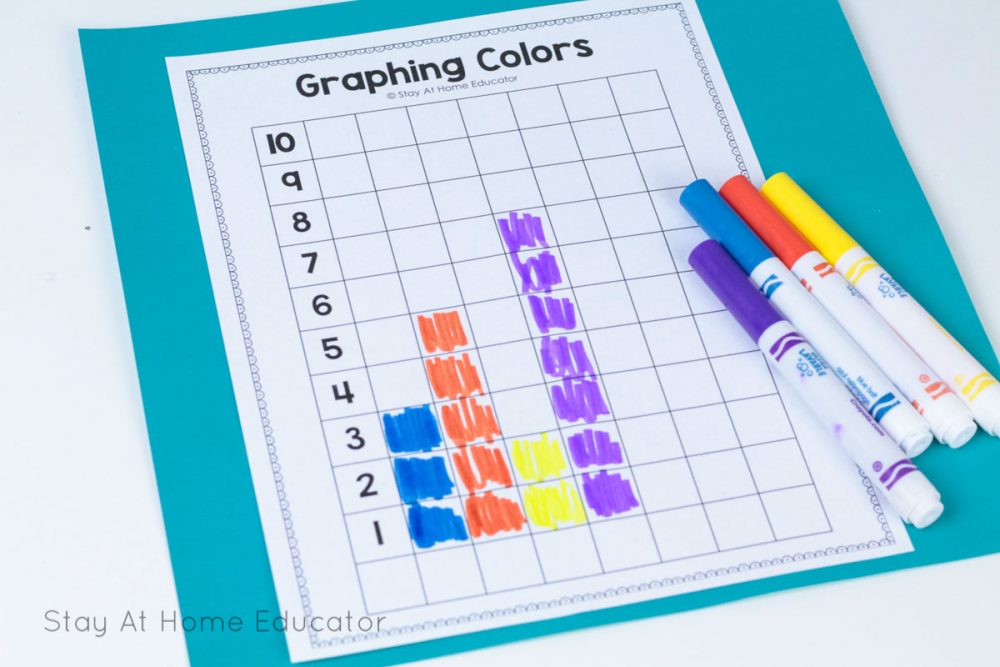
Now, this is not to say that every math activity needs something to take home to parents. We do lots of graphing activities on a regular basis, but not every activity results in a sheet to put up on the fridge. Just sometimes. Overall this lesson took about half an hour. If graphing is a newer concept for your preschooler, you may want to consider practicing with the unifix cubes several times before doing the transferring portion of the activity.
.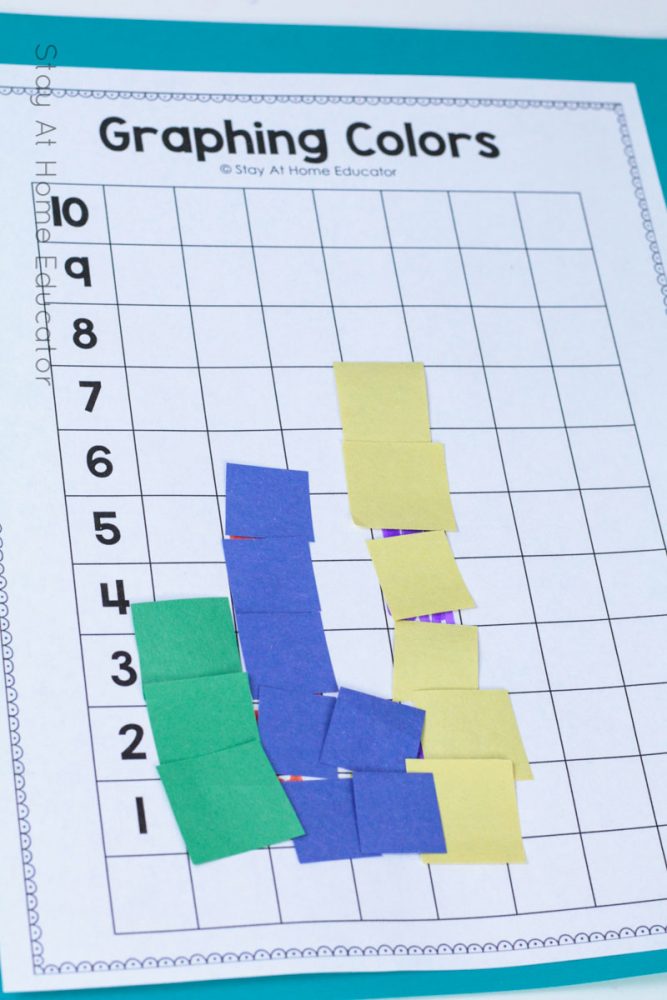
Don’t forget to print your graphing sheet! Graphing Colors Printable I have left it as a Word document so that it may be easier for you to edit, as some sets of counters do not include every color. (My set of unifix cubes doesn’t have purple, but black instead).
Enjoy!

I’m Sarah, an educator turned stay-at-home-mama of five! I’m the owner and creator of Stay At Home Educator, a website about intentional teaching and purposeful learning in the early childhood years. I’ve taught a range of levels, from preschool to college and a little bit of everything in between. Right now my focus is teaching my children and running a preschool from my home. Credentials include: Bachelors in Art, Masters in Curriculum and Instruction.
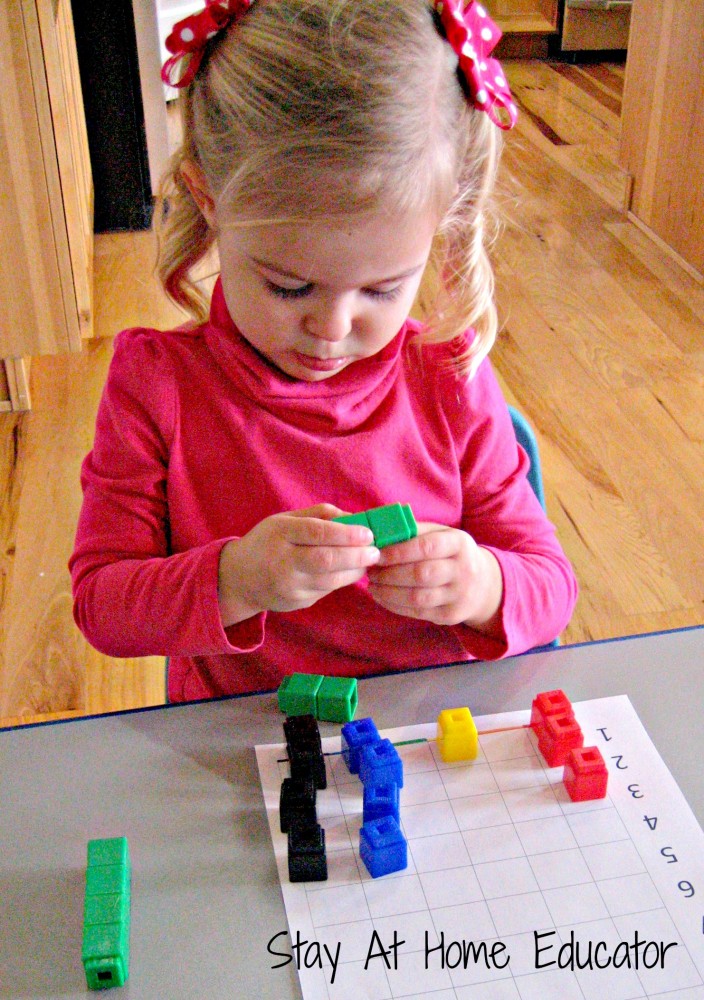
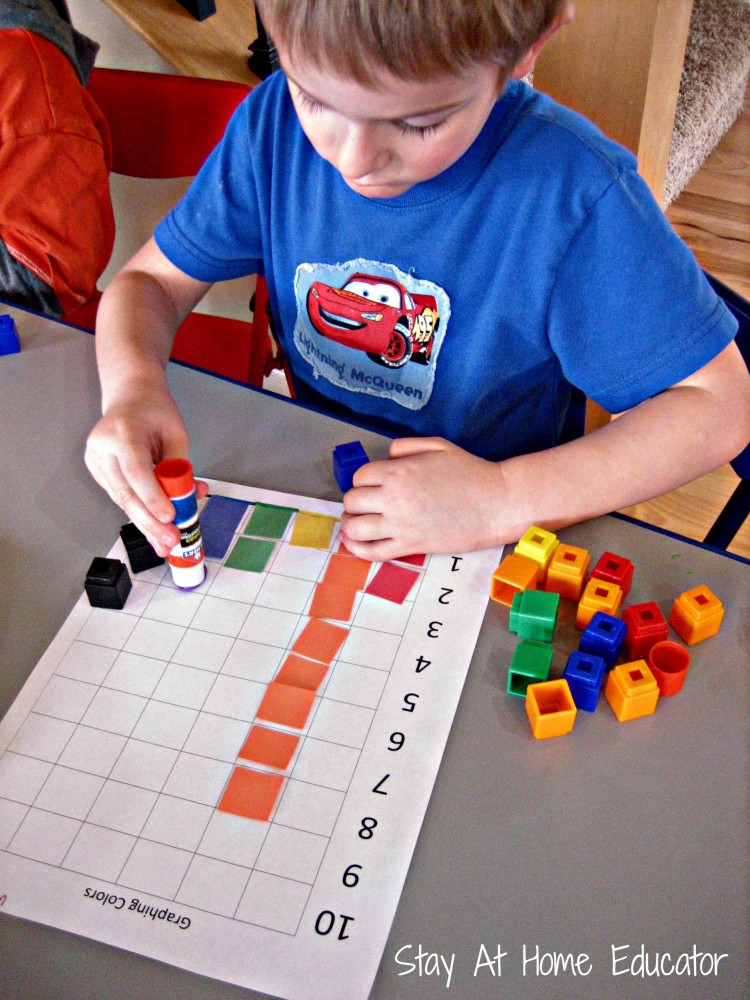

do you a example of an introduction for count and graphing activity
Try this activity. It’s a Zoo!